Sustainable Pumpkin Patch Ideas: Long-Lasting Paving
With increasing environmental concerns, we should start thinking about eco-friendly solutions for every aspect of our lives and businesses, and that includes pumpkin patches.
Here are 11 of our best pumpkin patch ideas to help you create a long-lasting, sustainable pumpkin patch.
The Need for Sustainable Pumpkin Patches
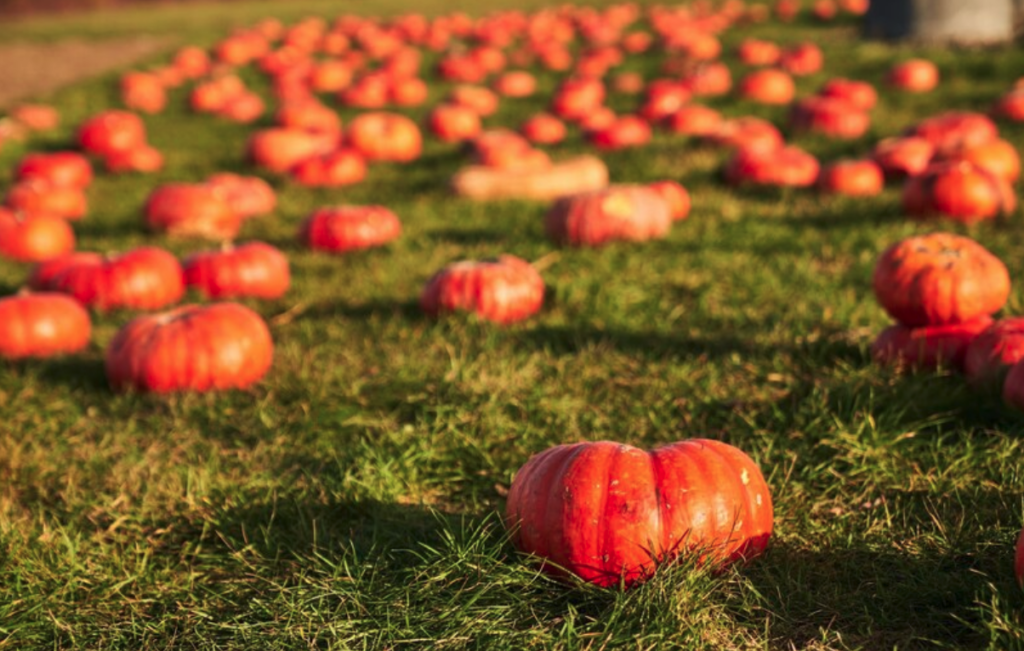
Traditional pumpkin patch designs can significantly impact the environment.
In fact, many pumpkin patch owners face similar challenges, and two of the most common problems are: common problems To name a few, we have soil erosion and water management
Soil erosion can make planting and maintaining pumpkins difficult, and water management issues—such as poor drainage—can lead to muddy and unappealing areas, which makes walking and growing pumpkins difficult.
However, adopting sustainable pumpkin patch ideas, you can help you not only protect the environment but also create a more enjoyable and lasting experience for your visitors.
11 Sustainable Design Ideas for Pumpkin Patches
Creating a sustainable pumpkin patch involves innovative ideas that cater to both functionality and aesthetics. Here are 11 sustainable ideas for your pumpkin patch:
1. Circular Pathways
Circular pathways not only look appealing but also help manage foot traffic. They guide visitors efficiently through the pumpkin patch and reduce soil compaction and erosion. This can also be easily accomplished using permeable pavers from TrueGrid.
2. Interactive Learning Zones
Setting up interactive learning zones where visitors can learn about pumpkin growing, sustainability practices is another interesting idea. These zones make the visit educational and engaging—and can be hot spots for families with children.
3. Raised Bed Sections
Raised beds are excellent for better soil management and easier maintenance. They prevent soil compaction and allow for better drainage.
4. Picnic and Rest Areas
Creating rest areas is another commonplace pumpkin patch idea—one that gives guests and visitors benches and tables to rest and enjoy their surroundings.
These spaces encourage longer visits and a more relaxed experience, which ultimately works to make your pumpkin patch a more enjoyable place.
5. Intricate Corn Maze
Although having nothing to do with pumpkins, a corn maze adds an element of fun and adventure to any pumpkin patch. If you design it with natural materials and large pathways, you will avoid damaging the soil.
6. Themed Zones
Create themed zones within your pumpkin patch. Each area can have a different theme, such as a fairy tale land or a spooky Halloween section. These are all low impact ways of enhancing your visitor’s experience.
7. Event Spaces
Designating spaces for events like pumpkin carving contests or fall festivals is another great idea. These areas should be versatile and durable and enable you to manage your customer experience—and manage event waste appropriately.
8. Children’s Play Area
A dedicated play area with sustainable play structures made from recycled materials can attract families and provide a safe space for children.
9. Accessibility Paths
Ensure your pumpkin patch is accessible to everyone by including well-designed paths for people with mobility issues. These paths should be wide, flat, and easy to navigate. Use permeable pavers to create the most stable pathways possible.
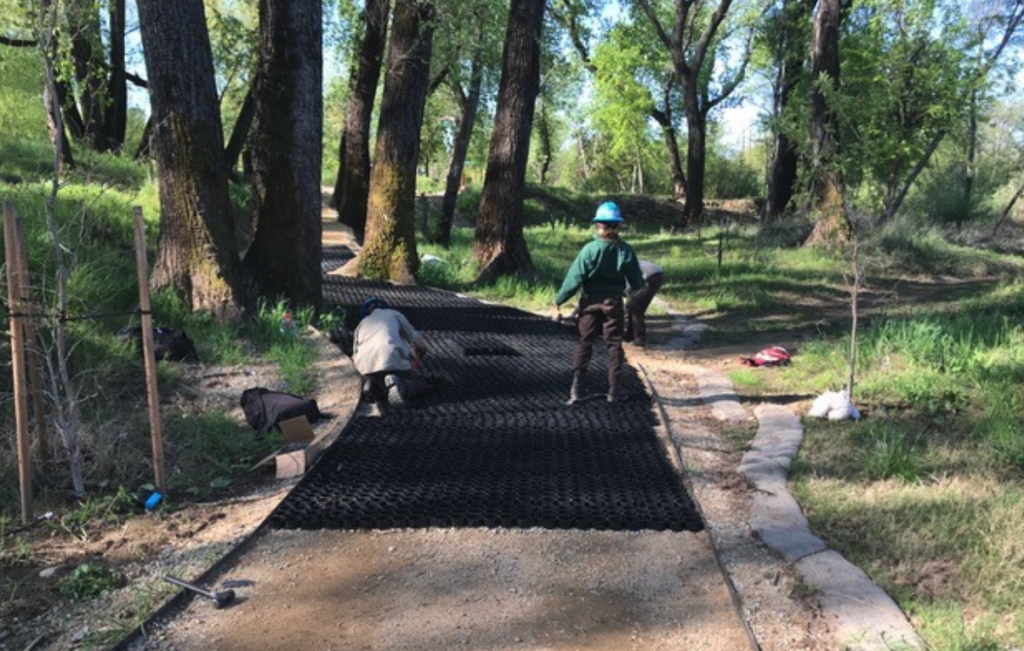
10. Pumpkin Display Stands
Display stands are another sustainable pumpkin patch idea that should be used more often. They’re attractive, sturdy, and keep pumpkins safe from foot traffic. In other words, they not only make the patch look organized but also protect the pumpkins from damage.
11. TRUEGRID® ROOT®
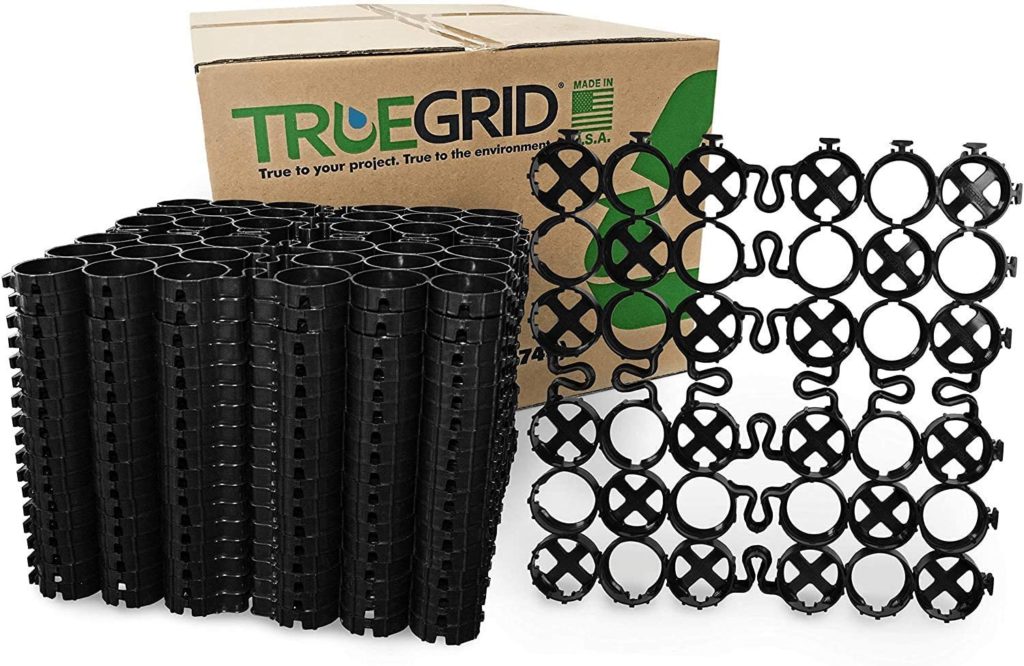
TRUEGRID® ROOT® is an ideal solution for reinforcing existing grass areas to remain permeable and provide support – such as pedestrian walkways and light vehicle traffic.
Its permeability allows grass to grow and provides a natural look that also supports heavy foot traffic. Not to mention, our grass paver system is a revolutionary paving solution designed for sustainability and durability. These qualities make it an exceptional option for pumpkin patches and paths.
The Benefits of Using TrueGrid in Pumpkin Patches
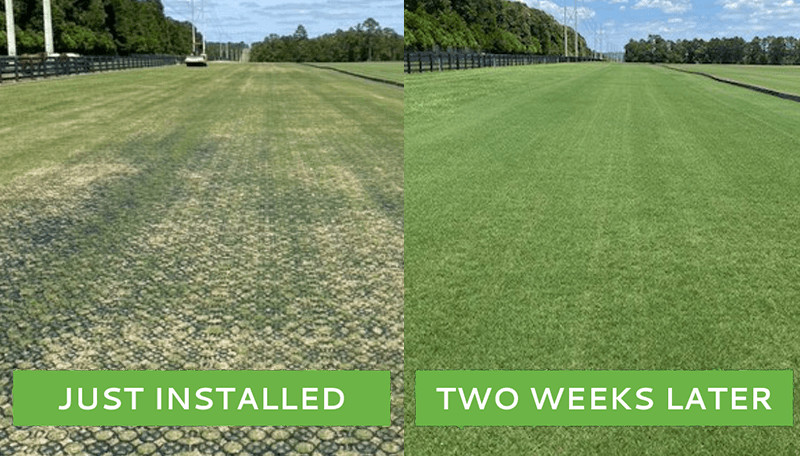
However, implementing TrueGrid in your pumpkin patch comes with a ton of other benefits as well, including:
Soil Protection & Erosion Control
Our permeable paver systems prevent soil erosion by providing a stable surface. This porous foundation helps maintain healthy soil, which is essential for pumpkin growth.
Water Management
Our systems’ permeability ensures proper water drainage, which reduces water pooling and related issues that often disrupt the clean pathways for pumpkin patches.
Durability & Longevity
When you use permeable pavers, you no longer have to work on maintaining the pumpkin grounds as much as you used to.
Visitor Experience
You visitors will also appreciate the appearance of your pumpkin patch—along with the easier walking pathways. Did we mention they’re also a lot more safe than walking on the muddy, slippery ground?
Eco-Friendliness
Since our pavers are made from recycled materials, they are an extremely environmentally friendly choice.
Transform Your Pumpkin Patch with TrueGrid
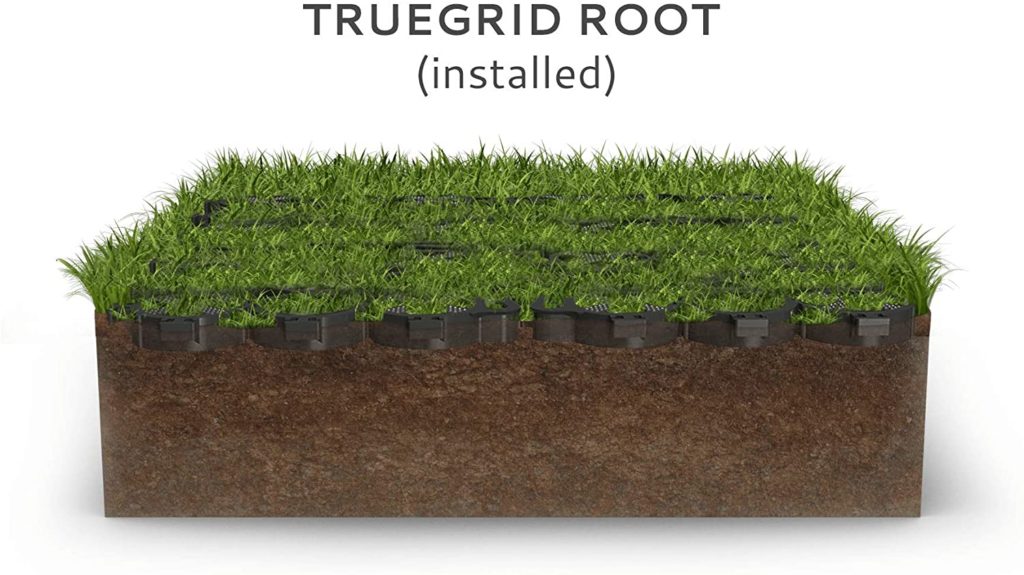
Ready to create a stylish, and long-lasting pumpkin patch? Use TrueGrid Pavers.
They’re a perfect solution for durable and eco-friendly permeable paving that helps keep pumpkin patches clean, safe, and sustainable.
And the best is:
If you’re interested, all you have to do is contact us today or get an estimate today!
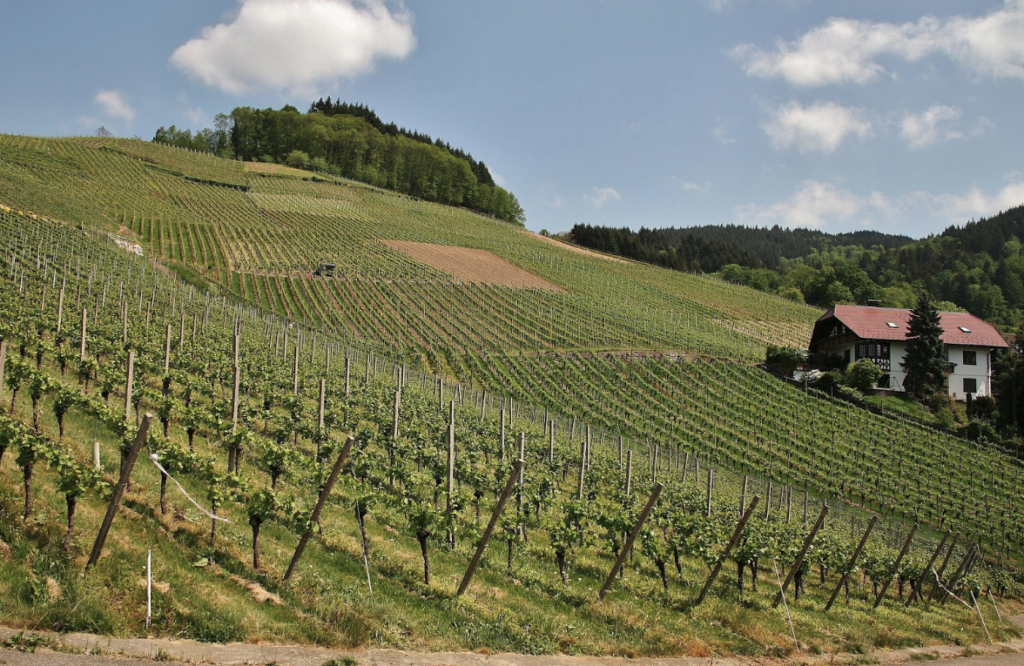
Are you searching for designs to make your winery truly unforgettable?
If so, you’ve come to the perfect place! No matter the size or style of your winery, we’ve created a list of innovative winery design ideas that are great to make all wineries even better.
Let’s jump in!
Why Design is Vital to the Success of a Winery
Designing isn’t just about aesthetics. It’s also about creating an atmosphere where people can relax and connect.
In fact, a well-designed winery can influence the mood of your guests, cause them to make purchases, and inspire them to come back for more.
A thoughtful design can also optimize the functionality of your winery and make it more efficient for the flow of customers into, through, and out toward the vineyard.
The best wineries create a seamless experience that enhances both the production and enjoyment of your tasty wine.
12 Inspired Winery Design Ideas
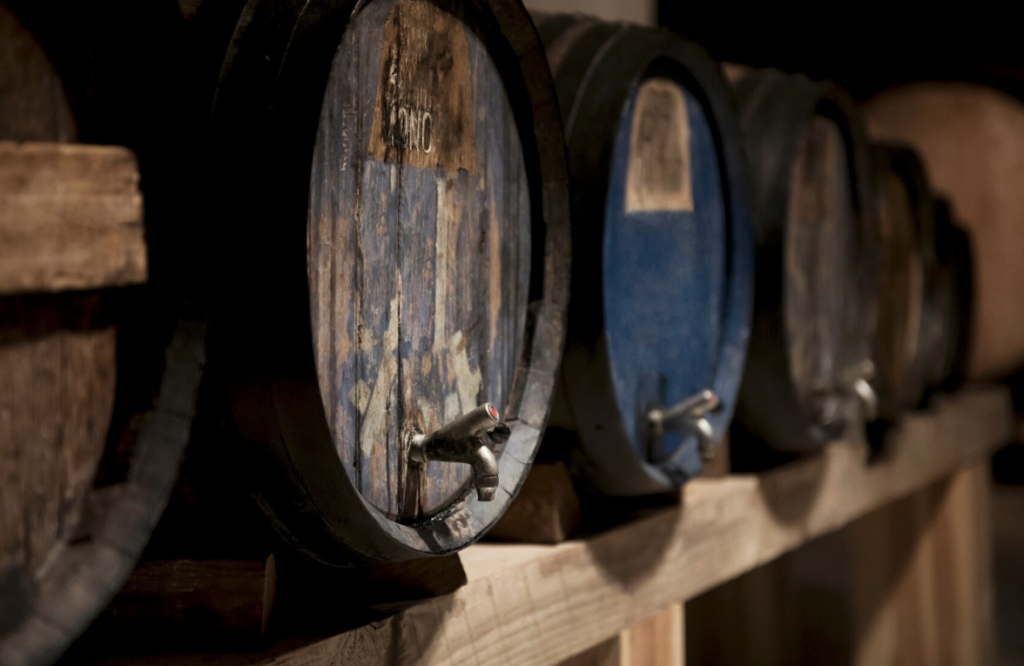
Designing a winery involves a careful blend of creativity and practicality. Here are some ideas to get you started.
1. Open-Air Tasting
An open-air tasting area can offer breathtaking views and a fresh, inviting atmosphere. Use weather-resistant furniture to ensure your guests’ comfort, and consider incorporating pergolas or shade sails for particularly warm or sunny days.
2. Barrel Cellar Tasting Room
Want to really catch the attention of others? Transform your barrel cellar into a unique tasting room.
The rustic charm of aging barrels—combined with intimate lighting—can help you create an unforgettable ambiance for guests as they sip and taste your wine.
It’s also an excellent way to showcase the wine’s journey from production to glass.
3. Smart Mood Lighting

Your lighting can also make or break the atmosphere of your winery.
Smart mood lighting allows you to adjust the ambiance to match different times of day or special events.
Whereas soft, warm lights create a cozy, inviting space, brighter lights can highlight key features of your winery’s architecture.
4. Use Colors Meaningfully
Color psychology is also important for wineries. Think of it this way:
Earthy tones evoke a sense of warmth and tradition, fostering a calm and relaxing area. Bold colors, on the other hand, make a modern statement and present a sense of energy.
Choose a color palette that represents the personality of your winery and complement the surrounding landscape—something that you want others to remember.
5. Cleanliness
A clean, well-maintained winery speaks volumes about your attention to detail.
So, make sure your tasting areas, production facilities, and restrooms are always spotless. It’s also important to keep in mind that cleanliness is required for health and safety standards—and keeping things clean leaves a solid-first impression.
6. Embrace the Rustic
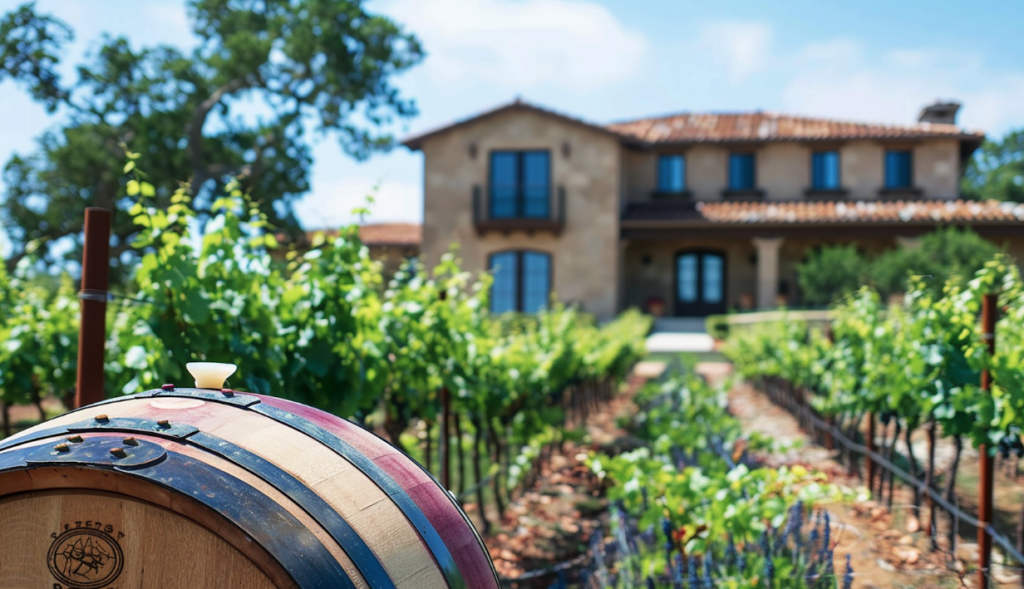
Rustic elements can add a sense of character to your winery. Think reclaimed wood, stone walls, and vintage décor—but use them wisely—purposefully.
These features can create a cozy, welcoming environment that resonates with the history and tradition of winemaking.
7. Create Small Gathering Areas
Small, intimate gathering areas encourage guests to relax and enjoy their experience. Cozy nooks with comfortable seating can make your winery feel more personal and inviting. It’s an excellent way to cater to groups of all sizes, and leave room for intimate conversations.
8. Comfortable Furniture
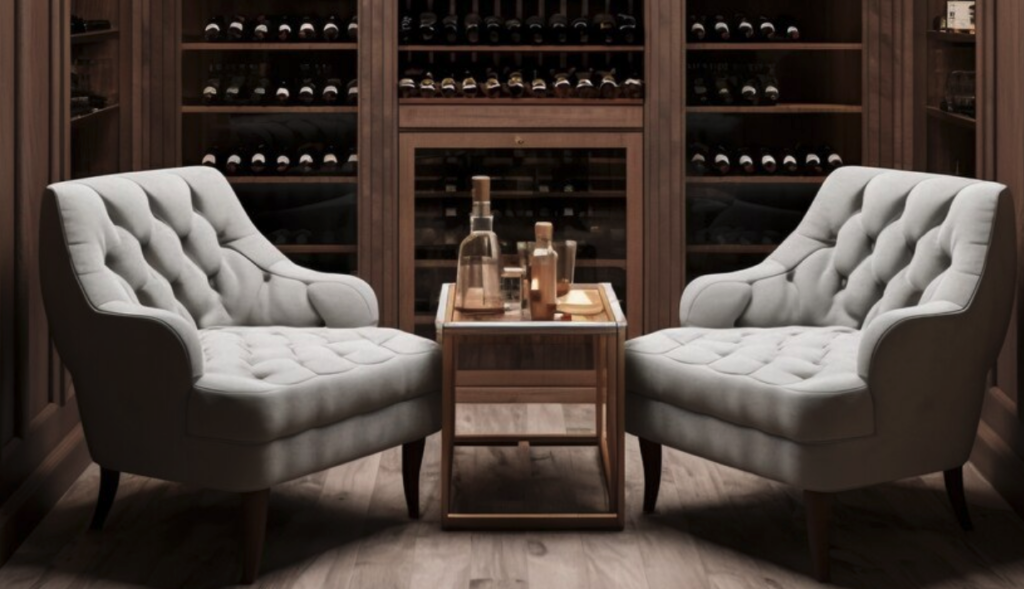
Investing in high-quality, comfortable furniture is essential for wineries. Your guests will definitely appreciate the comfort as they sip on your wines. Remember to choose furniture that is both stylish and durable to withstand the elements, especially if you plan on using them outdoors. With clean lines and a blend of natural materials, sicotas furniture offers a curated look that complements vineyard aesthetics beautifully—whether it’s a tasting patio with sweeping views or a cozy indoor lounge. Each piece is designed to be as functional as it is elegant, offering your guests a place to relax while reinforcing your brand’s attention to detail.
A well-chosen theme can tie all your design elements together. Whether it’s rustic chic, modern elegance, or vintage charm, a theme can guide your choices and create a unified look that will ultimately make your winery more memorable.
10. Landscaping Matters
The exterior of your winery is the first thing guests see, and well-maintained landscaping can enhance your winery’s curb appeal and create a welcoming entrance.
This is a must if you’re looking for effective winery design ideas!
Consider using native plants to complement the local environment and reduce maintenance needs.
11. Permeable Pavers
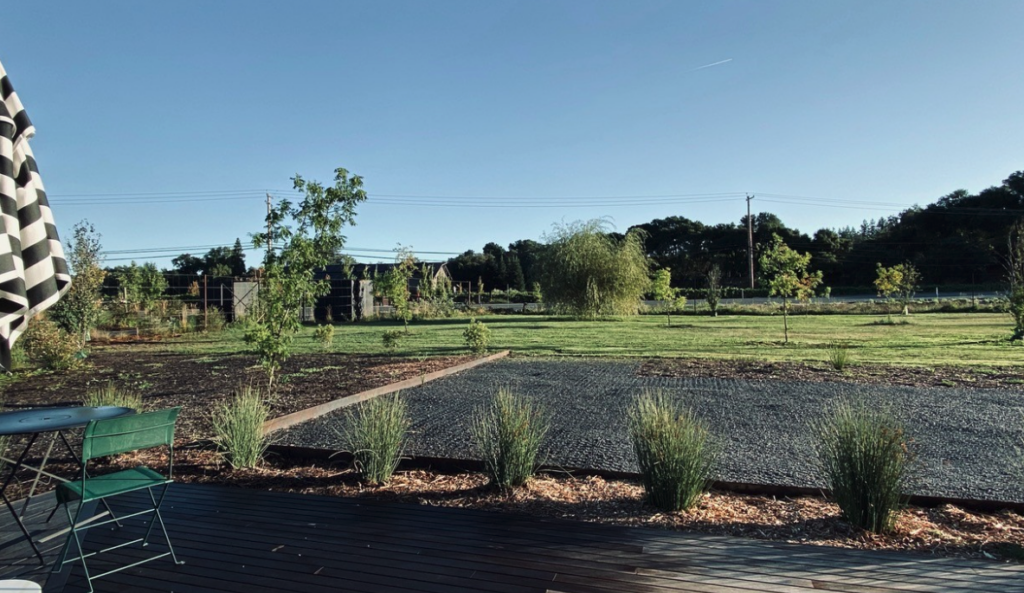
Speaking of landscaping, TrueGrid permeable pavers are an excellent addition to any winery design. Our paver systems blend functionality with sustainability to create an innovative solution for driveways, walkways, and grassy areas.
The grids themselves are visually subtle—and create a stable base—so that you never have to worry about shifting gravel or sand again.
But of course, the benefits don’t end there.
The Advantages of Permeable Pavers
Our permeable paver systems provide numerous design advantages:
- Eco-Friendliness: Our pavers are a sustainable choice that helps manage stormwater naturally. That means no pooling or water runoff in your winery.
- Durability: Our permeable pavers are designed to be incredibly durable and can withstand heavy traffic from vehicles and footfall without cracking or shifting. This is perfect for busy guest parking areas.
- Versatility: Our pavers can be used in various applications throughout your winery, from creating stylish and functional parking areas to charming garden paths and picturesque walkways.
- Low Maintenance: Our pavers are super low maintenance. Regular sweeping is usually more than enough to keep the pavers clean and free of debris.
Create Your Winery Design Ideas with TrueGrid Permeable Pavers
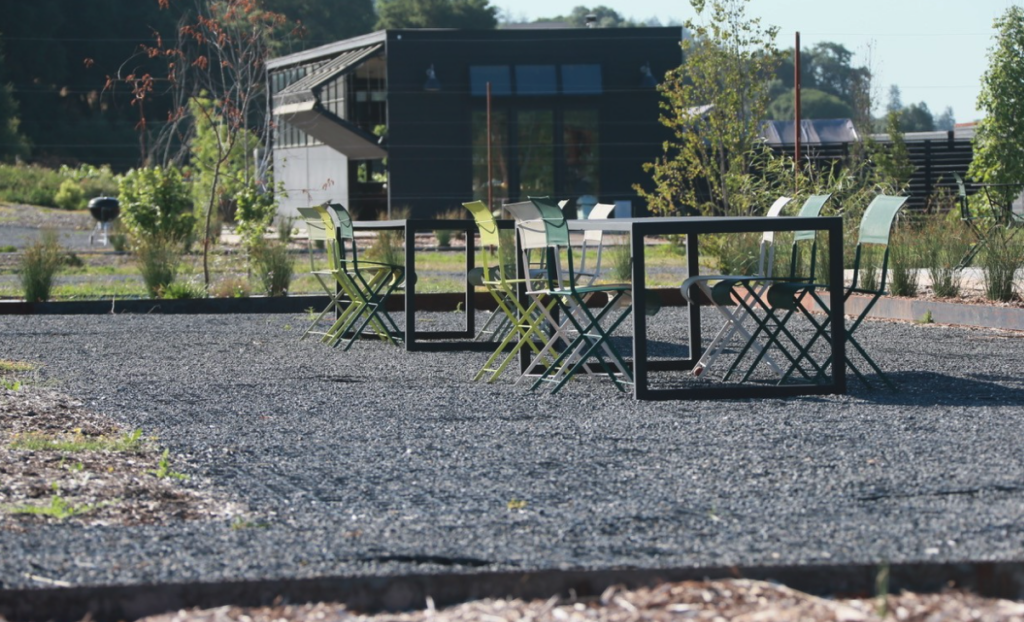
Feeling ready to update your winery with some of these winery design ideas?
Just remember: At TrueGrid, our permeable pavers offer the ideal blend of functionality and aesthetics to take your winery to the next level.
If you’re interested in learning more, contact us or get an estimate today!
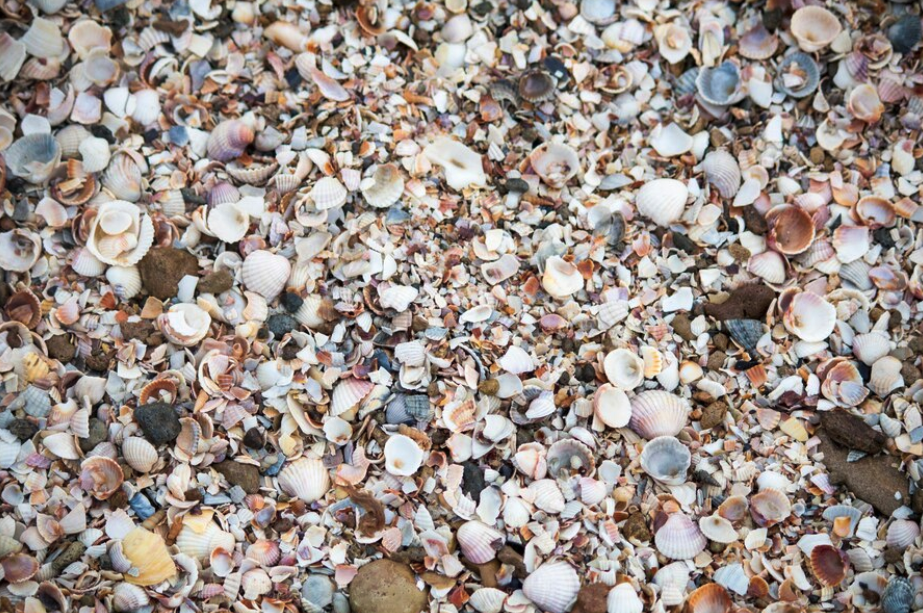
Are you thinking about installing a seashell driveway on your property? This trend has been catching the eye of homeowners and developers all over the world. But is it the right choice for you?
Let’s look at what makes seashell driveways stand out and how they work with TrueGrid pavers to create a durable and stylish solution.
What are Seashell Driveways?
Seashell driveways, often called crushed shell driveways, are a creative and eco-friendly option for home exteriors. This landscaping trend uses crushed seashells, like clamshells, as the primary material to create driveways.
The seashells that spread over the prepared base compact over time and create a stable and firm surface.
It’s a method that creates a unique yet distinctive coastal appearance to homes and, at the same time, offers several practical benefits, which we will talk about next.
Seashell Driveway Pros and Cons
When considering a seashell driveway, it’s essential to weigh the pros and cons of this trendy option, especially considering there are so many driveway options available.
Here are some of the advantages and disadvantages of using seashell driveways.
The Pros of Seashell Driveways
One of the significant benefits of a seashell driveway is its natural beauty. The shells’ varied colors and shapes create a visually appealing surface that can enhance your property’s curb appeal and gain the attention of others.
Plus, seashell driveways are environmentally friendly because they use recycled shells instead of wasteworthy materials. Traditional paving materials such as asphalt have some detrimental environmental effects during installation and throughout its lifespan.
On top of that, seashell driveways offer excellent drainage. The spaces between the shells allow water to filter through, reducing runoff and minimizing erosion.
The Cons of Seashell Driveways
On the other hand, seashell driveways aren’t without their drawbacks, such as:
Shifting Surfaces
Like gravel driveways, they can shift and spread over time, causing uneven surfaces. This means you have to periodically adjust the areas or add shells.
Sharp Edges
Crushed shells also have sharp edges, which might not be ideal for walking barefoot. They also have the potential to damage shoes or car tires. And if you have pets, they could also cause harm to your pets.
Weed Growth
Without proper installation, weeds might sprout through the shells, which may require regular maintenance as well.
Using Crushed Seashells with Permeable Pavers
Pairing crushed seashells with TrueGrid permeable paver systems can enhance your driveway’s stability and longevity. Our pavers provide a solid foundation that helps keep the shells in place, which reduces the shifty nature of the shells.
Here are some other benefits of using permeable pavers to create crushed shell driveways:
Durability
Permeable pavers provide a solid, interlocking base that helps prevent the shells from shifting or spreading over time. The pavers also protect the shells from pulverization increasing the shells’ lifespan and decreasing dust. This increased stability means your seashell driveway will maintain its appearance and functionality for many years, even with frequent use and heavy traffic.
Drainage
One of the standout features of permeable pavers is their excellent drainage capabilities. The spaces within the grid structure allow water to pass through easily, reducing runoff and preventing water from pooling on the surface, which works perfectly with crushed seashells.
Aesthetic Appeal
Seashells bring a unique and charming look to any driveway, while the paver system keeps the overall appearance neat and organized. The combination of natural shells and the structured layout of the pavers creates a coastal-inspired aesthetic that will enhance your property’s curb appeal.
Versatility
This system isn’t just limited to driveways. It’s also an excellent option for walkways, patios, garden paths, and other landscaping projects. And because the shells are held better in place with the paver systems, the walking surfaces are much smoother.
Plus, the versatility of permeable pavers paired with the beauty of seashells provides a cohesive and stylish solution for various outdoor areas—patios, paths, and gardens—making them adaptable to different design needs and preferences.
Use Permeable Pavers to Create Your Crushed Seashell Driveway and Paths
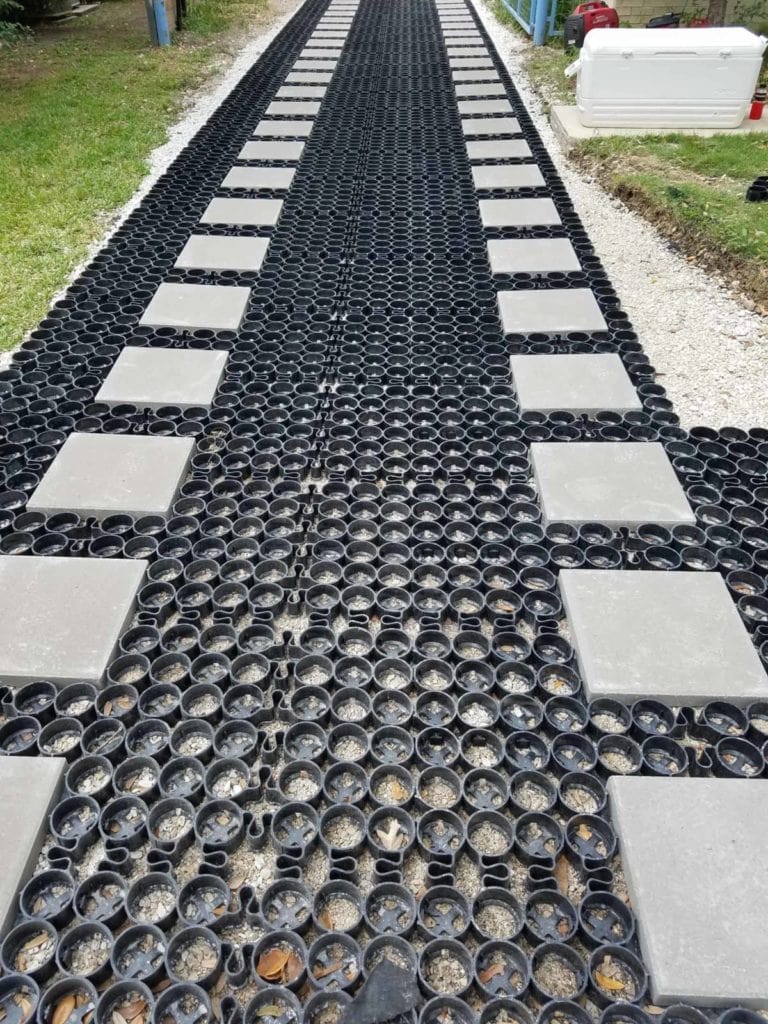
If you want to create a stylish driveway that stands out from others, you can’t go wrong by using seashells with our permeable paver systems.
They help you create a driveway that’s not only beautiful but also practical and durable.
Ready to transform your driveway with the unique charm of seashells and the stability of TrueGrid pavers?
Have you ever wondered how long your asphalt driveway will last? It’s a common question.
But understanding the average asphalt driveway lifespan can help you make informed decisions about your property’s upkeep and future investments.
Here’s what you need to know:
What is the Lifespan of an Asphalt Driveway?
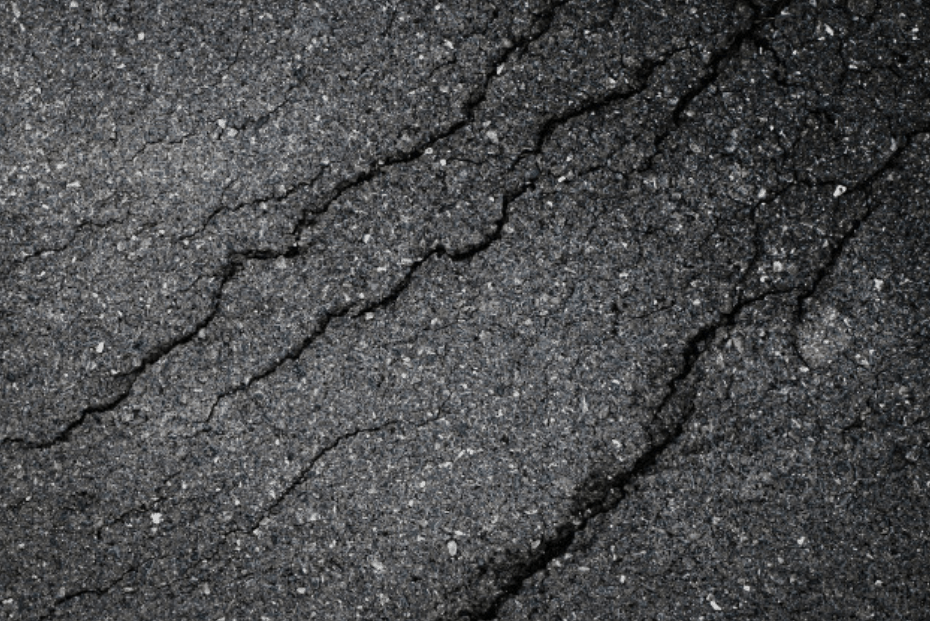
Simply put, an asphalt driveway typically lasts between 15 to 30 years. That said, this projected lifespan can vary greatly depending on several factors, including:
- Installation: The quality of the asphalt driveway installation plays a significant role in its longevity. Properly compacted sub-base and the right thickness of asphalt layers are crucial for a durable surface.
- Everyday Use: Heavy traffic, especially from larger vehicles, can significantly shorten the overall lifespan of an asphalt driveway. Even regular use by cars can cause wear over time, leading to the need for more frequent maintenance.
- Weather Conditions: Extreme weather conditions, like freezing and thawing cycles, can cause some serious damage to asphalt. Hot temperatures can also soften the asphalt, leading to ruts and indentations from parked vehicles.
- Maintenance: Regular maintenance, including sealing cracks and applying sealant, may extend the life of your driveway. Neglecting these tasks can lead to more damage and a shorter overall lifespan for the asphalt.
Signs Your Asphalt Driveway Needs Repairs

If you want to own an asphalt driveway, you should learn to recognize the signs for when it may need to be repaired. Here are some common indicators that your driveway may need attention:
- Oil Stains: These can weaken the asphalt, leading to cracks.
- Loose Gravel: A sign that the asphalt binder is breaking down.
- Potholes: Not only unsightly but also dangerous for vehicles and pedestrians.
- Pooling Water: Indicates poor drainage, which can erode the asphalt.
- Uneven Surfaces: A hazard that can worsen over time.
- Fading or Discoloration: Often due to UV damage and age.
- Cracks: Small cracks can grow quickly if not immediately addressed.
If you notice any of these issues, it’s time to consider repairs to maintain your asphalt driveway’s integrity and appearance.
Introducing Permeable Pavers: A Better Alternative
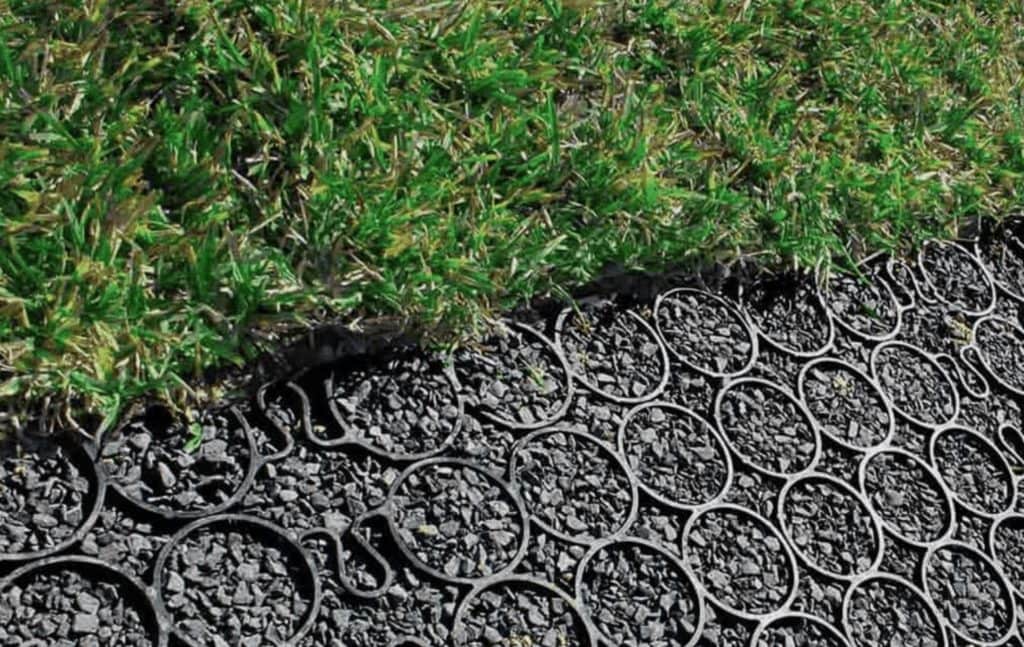
Considering the limitations and maintenance needs of asphalt driveways, you might want to consider asphalt alternatives before choosing it for your driveway.
At TrueGrid, our permeable pavers are the perfect sustainable and durable alternative to asphalt driveways.
Why?
It’s because our pavers allow water to pass through them, which reduces erosion and flooding—a common issue with traditional asphalt.
They’re also specifically designed to handle heavy loads and resist shifting or cracking, which makes them an ideal for driveways and walkways.
They provide a robust and eco-friendly solution that requires minimal maintenance compared to asphalt.
The Lifespan of TrueGrid Permeable Pavers
Unlike asphalt, which requires regular sealing and repairs, our permeable pavers maintain their integrity with little upkeep.
The result is a permeable paver driveway that lasts significantly longer than the traditional asphalt driveway lifespan.
Benefits of Permeable Pavers
These factors alone make them an excellent investment for property owners looking for a long-lasting and low-maintenance driveway solution. But of course, there are more benefits you get when using permeable pavers.
Here are some of our favorite:
1. Environmental Sustainability
Permeable pavers promote natural water infiltration, which reduces runoff and helps replenish groundwater supplies. This makes our permeable paver systems an environmentally friendly option compared to impervious surfaces like asphalt.
2. Enhanced Durability
TrueGrid permeable pavers are also made from high-quality, robust materials that withstand heavy loads and resist shifting or cracking. Their design ensures long-term durability—even under frequent use and extreme weather conditions.
3. Improved Aesthetics
Permeable pavers come in various materials and colors, which means: you can create the driveway design that perfectly complements your property. Not to mention, they also offer a modern, clean look that enhances curb appeal.
4. Better Drainage
The permeable nature of these pavers ensures excellent drainage, reducing the risk of pooling water and ice formation. This makes them a safer option for both driveways and walkways, preventing accidents caused by slippery surfaces.
5. Eco-Friendly Material
Our pavers are often made from recycled materials, contributing to a lower carbon footprint. By choosing permeable pavers, you’re supporting sustainable practices and reducing environmental impact.
Invest in Something Reliable

When it comes to choosing a reliable and long-lasting driveway solution, TrueGrid permeable pavers stand out as a superior alternative that lasts longer than the average asphalt driveway lifespan.
Our pavers are incredibly durable, eco-friendly, and low maintenance, which makes them an excellent choice for homeowners, commercial property owners, and developers alike.
Don’t settle for the short lifespan and frequent repairs associated with asphalt driveways. Instead, invest in permeable pavers for a sustainable and long-lasting driveway solution.
Interested? Get an estimate today!

